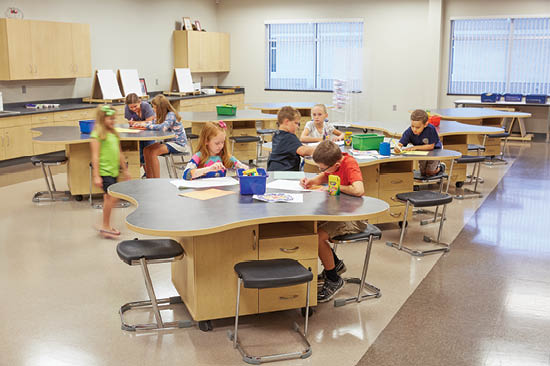Several years ago, I had the great fortune of participating in a training of trainers for developmentally appropriate practice as part of NAEYC’s Annual Conference for early childhood educators. We learned that one key component of developmentally appropriate practice is to create a caring community of learners. While it has always been important, I feel like the renewed emphasis on social and emotional learning makes this idea even more relevant. It goes hand in hand with CASEL’s social and emotional learning core competency of relationship skills.
First, creating a caring community of learners requires teachers to provide warm, caring, and responsive interactions. This may seem like a no-brainer for anyone who is not an educator, but sadly, I have visited many classrooms over the years where the teacher does not exhibit these behaviors. For example, I watched a little boy enter a pre-kindergarten classroom one morning crying as he separated from his mother. Neither teacher acknowledged his emotions nor tried to comfort him. Now maybe this happens every day, but regardless, the adults should offer some type of responsive interaction if they want to build a relationship with that child and provide a caring atmosphere in the classroom.
Building relationships with others is also key to creating a caring community of learners. As young children enter school, they start forming relationships with the adults and other children in their environment. The first relationship children may have with an adult outside the home could be at school and could be the model for the rest of the relationships they will have with future teachers. One of teachers’ main goals is to build relationships with their students. This fosters a sense of well-being in children; they learn to trust and begin to believe that they are safe and worthy. When they feel safe and worthy, they will be receptive to learning.
In addition to establishing positive, constructive relationships with adults, teachers need to help their students foster relationships with peers. Providing children opportunities to work together in small groups, play together at interest areas, or referring children to one another for help, are all part of an early childhood educator’s job. CASEL’s definition of the relationship skills competency includes cooperating with others and negotiating conflict constructively. They also list teamwork and social engagement as subtopics within this competency. What better way to hone these skills than by interacting with classmates through a variety of situations during a school day.
A third component of creating a caring community of learners and strengthening relationships, is for teachers to ensure that all children are valued. This means getting to know students’ interests, learning styles, personalities, prior experiences, strengths, and challenges. By observing children, conversing with them, truly listening to them, and communicating with their families, teachers can easily collect this crucial information. This knowledge will help teachers better know who is in their classroom and how they can best help them learn.
A fourth and final component to consider when creating a caring community of learners, is to focus in on the word community. Having a sense of community means seeing oneself as belonging to a group or coming together for a common purpose. Early childhood educators need to be cognizant of the fact that this may be the first time a child will be part of a group. If he or she has never been to school before or has never participated in any group activities outside the home, coming together as a large group might be overwhelming. The child may seem shy or unsure how to act or may feel uncomfortable speaking in front of others. During many years of teaching pre-kindergarten and kindergarten, I never thought about this. Now, reflecting on these ideas, I remember many children who did not want to participate in large group games or music and movement activities. The best example was every year, I would begin with a game called “I’m Looking for a Friend”. The children stood in a circle, and I walked around the outside singing, “I’m looking for a friend, I’m looking for a friend, I’m looking for a friend and her/his name is…”. Wherever I stopped, I would insert that child’s name into the song and ask them, “Do you want to be my friend?” Most children said yes, and they would grab onto my waist so we could make a friend train. We would then continue to add more children to our train. However, every year, at least one child would say no. I always thought it was odd they did not want to join in the fun, but now I understand what was happening. They were unsure about being part of our community because perhaps this was a totally foreign experience for them. That is why I always played the game again at the end of the year and, of course, everyone said yes to the friend train because by then we had truly built our community of learners.
CASEL tells us, learning is a social and interactive process that takes place with adults and other children. We also know that emotions and relationships affect how and what we learn. Therefore, having strong social and emotional skills help children do better both in school and in life. When we strive to create a caring community of learners, we are supporting social and emotional learning which, in turn, is supporting our youngest learners to succeed.

